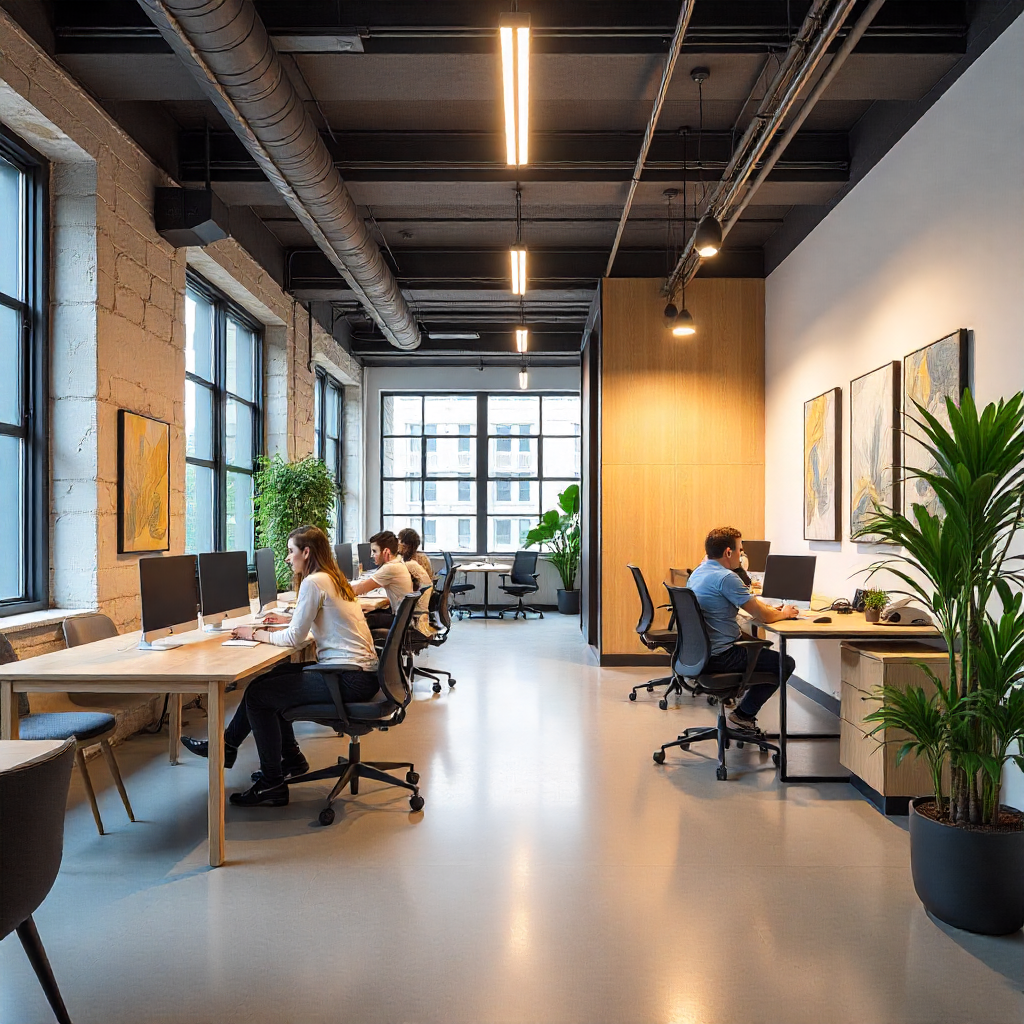The design of an office is increasingly recognized as a key element contributing to a business's operational success and employee satisfaction. As companies seek to optimize their environments, the question often arises: how do you find the right interior designers for office spaces? This article provides insights into selecting professionals who can translate business needs into a functional, engaging, and inspiring workplace.
The Strategic Importance of Office Design
An office is more than just a place to perform tasks; it’s a living entity that reflects a company’s culture, influences team dynamics, and impacts overall productivity. Thoughtful interior design addresses several critical business facets:
Productivity and Focus: A well-arranged office minimizes distractions, provides appropriate tools, and offers varied zones for different types of work, directly impacting output.
Employee Engagement and Well-being: Access to comfortable furnishings, good lighting, and break areas can significantly boost morale, reduce stress, and foster a positive work atmosphere, contributing to staff retention.
Brand Identity: The physical space communicates a company's values and brand story to both employees and external stakeholders. It serves as a tangible representation of professionalism and innovation.
Collaboration and Communication: Layouts that encourage natural interaction, along with dedicated spaces for team meetings, are essential for fostering teamwork and effective information exchange.
Adaptability for Growth: A forward-thinking design can accommodate future expansion, technological upgrades, and shifts in work models, ensuring the space remains relevant.
Given these complex requirements, the role of specialized corporate interior environments becomes invaluable.
Why Engage Specialized Office Interior Designers?
While general interior designers or architects handle various projects, those who focus specifically on office spaces bring particular advantages:
Commercial Expertise: These designers possess in-depth knowledge of commercial building codes, safety regulations, and compliance standards specific to workplaces. This specialized understanding helps avoid costly errors and ensures legal adherence.
Understanding Workflow Dynamics: They are adept at analyzing business operations and designing layouts that support specific workflows. This includes optimizing desk arrangements, pathways, and the placement of common resources.
Ergonomics and Well-being: Specialists prioritize ergonomic furniture and solutions that support employee health and comfort, a crucial factor often overlooked in non-specialized designs.
Technology Integration: Modern offices are technology-dependent. Expert designers seamlessly integrate power, data, and audiovisual solutions into the design, ensuring a connected and efficient workspace.
Budget Management and Material Selection: They have established relationships with commercial-grade suppliers, ensuring durable, cost-effective, and aesthetically appropriate material choices. Their experience helps keep projects within financial parameters.
Minimized Disruption: Professional designers manage the project from start to finish, coordinating trades, adhering to schedules, and mitigating potential issues, allowing the business to focus on its core operations.
Future-Oriented Design: They think beyond immediate needs, designing spaces that are flexible and scalable, ready to accommodate a company's evolution.
Key Considerations When Choosing Interior Designers for Office Projects
When seeking interior designers for office spaces, evaluating these aspects can help ensure a successful partnership:
Relevant Portfolio: Examine their past commercial projects. Do they demonstrate experience with office environments similar in scale or industry to yours? Look for functionality, aesthetic appeal, and problem-solving.
Understanding Your Business: A good designer will invest time in understanding your company's culture, operational needs, team size, future growth plans, and specific challenges. They should ask probing questions.
Comprehensive Service Offering: Do they handle the entire process, from initial conceptualization and space planning to detailed design, material selection, project management, and final installation? A holistic approach simplifies the process for you.
Local Knowledge (if applicable): For businesses in specific regions like Chennai, designers familiar with local building codes, permit processes, and a network of reliable local contractors and suppliers can provide smoother execution.
Communication Style: Assess their communication. Are they clear, responsive, and do they actively seek your feedback at every stage? Effective communication is vital for alignment.
Budget Transparency: Ensure they provide clear cost breakdowns and work within your defined budget, offering solutions that meet financial constraints without compromising quality.
Client References: Speaking with previous corporate clients can offer valuable insight into their professionalism, project management skills, and ability to deliver on promises.
The Office Design Journey with a Professional Firm
Engaging interior designers for office spaces typically follows a structured path to ensure a well-planned outcome:
Initial Consultation: A thorough discussion to define project goals, budget, timeline, and specific functional requirements.
Space Planning & Concept Development: Designers create initial layout options, mood boards, and possibly 3D visualizations to present design directions and gather client feedback.
Detailed Design Documentation: Once a concept is approved, detailed drawings, material specifications, and furniture selections are finalized, forming the blueprint for construction.
Project Management & Execution: The design firm oversees the implementation, coordinating with all involved parties (contractors, vendors) and ensuring the project adheres to quality standards and schedule.
Final Installation & Handover: Supervising the placement of furniture and fixtures, followed by a final walkthrough and handover of the completed office.
Choosing the right interior designers for office premises is a strategic decision that shapes the future of your workspace. It’s an investment in productivity, employee welfare, and your company’s brand image. By partnering with specialists who understand the intricate demands of corporate environments, businesses can create spaces that are not only visually appealing but also actively contribute to their success and growth.
To explore how expert office design can benefit your business, consider connecting with a specialized firm today.




















Write a comment ...